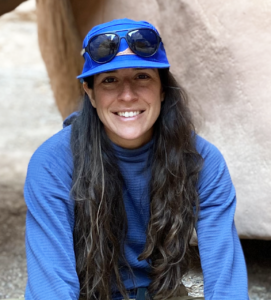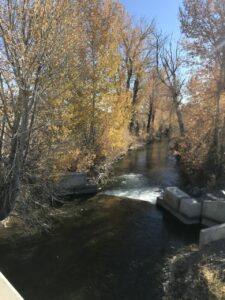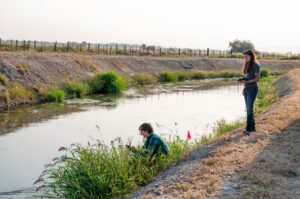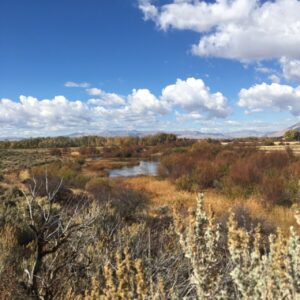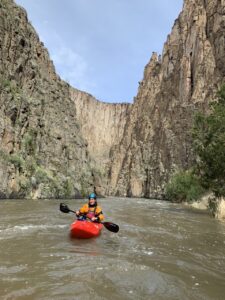The Wood River Water Collaborative (WRWC) represents approximately seventy-five diverse water users that came together at a critical juncture in the Big Wood basin’s history. First established about eight years ago, this group was formed to ensure the long-term health of the Wood River watershed. Trout Unlimited (TU), along with staff from The Nature Conservancy and the Wood River Land Trust, administers and facilitates the Collaborative.
In 2019, on behalf of the WRWC, TU applied for, and was awarded, a US Bureau of Reclamation WaterSMART grant to help advance some of the WRWC’s priorities. For example, several members of the Collaborative expressed the need for a predictive surface water model for the valley; a tool that would allow water users in the region to make planting and irrigation decisions early in the spring with some foreknowledge about the likelihood of water supply shortages. With funding secured from the grant, we were able to contract with Boise State University Professor Kendra Kaiser to create this model and other related tools.
Recently, Ashlynn Goody, TU’s Policy & Outreach Associate, sat down with Dr. Kaiser to learn more about her work for the WRWC and how it can benefit efforts to improve water management in the Wood River Valley.
What inspired you to work in water?
At the age of 19, I moved to Montana to be a raft guide on the Yellowstone River. It didn’t take long for me to transfer to Montana State, where I continued my degree in Soil and Water Science & Environmental Biology. Every summer during college, I moved to a different river and guided, including the Payette River, north of Boise. It was my own personal tour of Western watersheds. One semester, I enrolled in a general water resources class; the professor shared really wild stories about water resources research. It fascinated me and I quickly realized how much my recreational activities aligned with hydrologic research. I wanted to make a career out of what I loved, and I knew it would be important work.
What is the work you are doing for the WRWC?
In the Wood River Valley, I am working with a range of stakeholders in the basin to create streamflow forecasting and data visualization tools to facilitate decision making. That can range from what an irrigator might plant, to how water management practices might impact water curtailment decisions. My work has been considered in the Big Wood River Ground Water Management Area Management Plan.
Why is it important?
At the end of the day, there are people whose livelihoods depend on water availability. Providing them with information that they can actually use and interpret to make time-sensitive decisions is vital to their success, and the community that they live in.
There are also sensitive ecosystems, like Silver Creek that support important fisheries. The surface water predictability model will support those that seek to make decisions in advance instead of scrambling to try and figure things out as they unfold.
The tools created for WRWC can improve management of surface and groundwater resources for both agricultural and conservation goals.
How did you first get started with working in the Big Wood?
The WRWC placed an open request for proposals to complete a new project outlining the needs of the group and stakeholders. A friend of mine in town forwarded it to me, knowing that the request was aligned with my work at the university.
I was so pumped because it was exactly what I was interested in doing. It [the model] can be applied and engages stakeholders. The WRWC is a pretty unique thing – especially for Idaho. The WRWC already had a stakeholder group formed and engaged; it had all the right people, and they were already coordinated together in one room. That got us ten steps ahead of most research happening this way.
What are the next steps?
The work funded by the grant TU secured on behalf of the WRWC elegantly positioned Kendra to secure a much larger grant funded by the USDA that will improve the initial model. I’ll be working with additional partners and researchers to explore uncertainty in the model, which in turn, allows us to be more confident in the results. This next step will be to make the data available online, accessible virtually at any time, by anyone. Data access and confidence means that farmers and ranchers in the Big Wood Valley will be able to make real-time decisions without having to wait for me to run the model manually each month in the spring. We’ll also be able to expand our research to include spatially distributed snow data which will provide more accurate results.
We’re going to expand the model to include water quality of Silver Creek too. This will help us determine what metrics and information are important to the health of Silver Creek, which is a uniquely different environment from the rest of the valley.
How do you suggest others get involved in water work?
Generally, I think the first thing every person should know is where their water comes from. Find out if you water your lawn with surface water from a local irrigation district or if you use city tap water to water. Many resources like this provide great context for how water rights in Idaho work. It also helps explain things like what an irrigation district is.
Everyone should be curious about how water is used and ask questions to understand how we consume water and if that consumption is sustainable in the long run. Gain more knowledge about your local water resources and reach out to people with those questions; public hearings or opportunities to engage (like stakeholder advisory groups) are great ways to get involved.
What do you like to do in your free time?
I enjoy anything outside, but largely time spent on the river. I’m a big kayaker, but I enjoy any form of river activities like surfing or tubing the Boise River, overnight raft trips, and many more outdoor activities in Idaho – it’s why I moved here in 2017 and choose to stay.
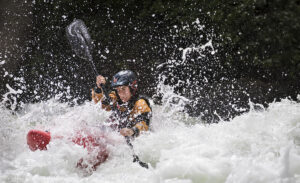
Kendra competed in the Expert Slalom event during the 44th annual Bigfork Whitewater Festival on a foamy section of the Swan River known as the “Wild Mile” on May 25, 2019. Hunter D’Antuono | Flathead Beacon
You can find out more about Dr. Kendra Kaiser below:
https://www.boisestate.edu/earth/staff-members/kendra-kaiser/

